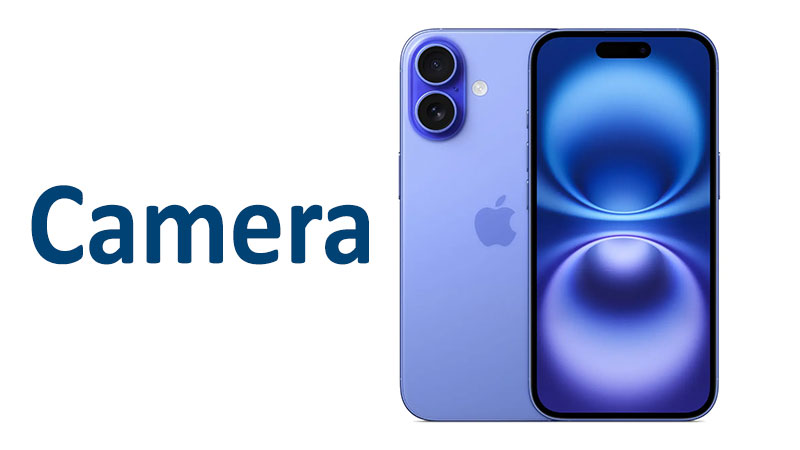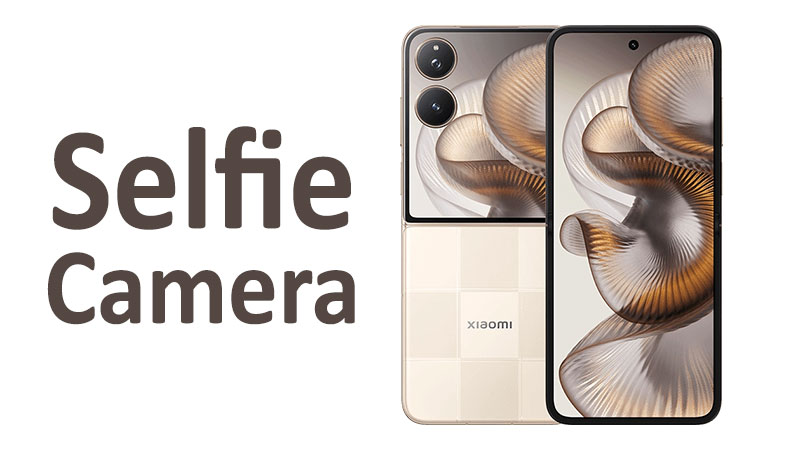In the world of smartphones, the camera is no longer just a feature; it’s the core of the experience. It’s how we capture memories, express creativity, and share our lives. The Apple iPhone has long set the standard for mobile photography. With each new model, the anticipation for camera improvements is palpable. The Apple iPhone 16 camera arrives with a promise to not just maintain but elevate this legacy. This article delves into every aspect of its camera system, from the technical specifications to real-world performance. We will explore what makes the iPhone 16 a significant step forward in smartphone photography, whether you are a professional photographer or simply a user who loves to take great photos.
The Heart of the System: Core Camera Specifications
The camera system on the iPhone 16 is a carefully engineered fusion of hardware and software. It is designed to deliver exceptional image quality in a variety of conditions. The rear camera features a new vertical alignment, a notable design change from the diagonal layout of the iPhone 15. This new arrangement isn’t just for looks; it enables a key new feature.
The main camera setup consists of a powerful dual-lens system.
- Main Camera: 48 MP, f/1.6, 26mm (wide). It features a large 1/1.56″ sensor with 1.0µm pixels. This sensor is enhanced with dual-pixel PDAF (Phase Detection Autofocus) and sensor-shift OIS (Optical Image Stabilization). The larger aperture (f/1.6) allows more light to reach the sensor. This is a significant improvement for low-light photography. It captures stunningly detailed photos, whether in a sunlit landscape or a dimly lit restaurant.
- Ultrawide Camera: 12 MP, f/2.2, 13mm, 120˚ (ultrawide). It uses a 0.7µm pixel size and also benefits from dual-pixel PDAF. The ultrawide lens captures expansive scenes. The inclusion of dual-pixel PDAF on this lens is a major upgrade. It ensures the ultrawide camera can focus accurately and quickly. This is particularly useful for close-up shots and creative compositions.
The camera system is complemented by a dual-LED dual-tone flash and support for HDR photo and panorama. The new camera layout also allows for spatial video capture, a feature designed for the Apple Vision Pro headset. This means you can record immersive 3D videos.
Front-Facing Camera: The Self-Expression Tool
The selfie camera on the iPhone 16 is just as impressive.
- Selfie Camera: 12 MP, f/1.9, 23mm (wide). It has a 1/3.6″ sensor with 1.0µm pixels and PDAF. This is a top-tier front camera. It ensures selfies are sharp and well-exposed.
- Additional Sensors: It includes an SL 3D sensor for depth and biometrics. This powers Face ID and adds a new dimension to the selfie experience.
The front camera supports advanced features like HDR and Dolby Vision HDR. It also enables 3D (spatial) audio and stereo sound recording for videos. This makes it perfect for vlogging and video calls, providing crystal-clear audio quality.
Performance in Detail: A Deeper Dive
The performance of the Apple iPhone 16 camera is about more than just megapixels. It’s about how the hardware and software work together. The new A18 Bionic chip plays a central role. Its enhanced Neural Engine and dedicated machine learning cores power all the computational photography magic.
Image Quality and Computational Photography
The 48 MP main sensor, combined with Apple’s advanced image processing, delivers stunning results. In well-lit conditions, images are sharp, with accurate colors and a wide dynamic range. The iPhone 16 excels at capturing highlights and shadows. This prevents overexposure in bright skies and loss of detail in dark areas.
In low-light situations, the larger f/1.6 aperture and improved sensor-shift OIS come into their own. The iPhone 16 captures bright, clear photos with minimal noise. Night mode is more effective than ever. It produces detailed and well-exposed images even in near-darkness.
The new Photographic Styles feature is also more refined. It allows users to customize the look of their photos. You can adjust tone and warmth without affecting skin tones. This gives you more creative control right from the camera app.
Video Capabilities: Setting a New Bar
Video recording is a key strength of the iPhone 16. It offers a wide range of options.
- Video Recording: 4K at 24/25/30/60fps.
- Slow Motion: 1080p at 120/240fps.
The video quality is exceptional. It is characterized by smooth motion, high detail, and impressive color accuracy. The inclusion of Dolby Vision HDR support means you can capture and watch videos with cinematic quality. The gyro-EIS (Electronic Image Stabilization) on the front camera ensures your selfies and vlogs are steady and professional-looking.
A standout new feature is “Audio Mix.” This allows you to adjust the sound of a video after you’ve recorded it. You can reduce wind noise or balance voice tracks. This is a game-changer for content creators. It gives you studio-like control over your audio, all on the phone.
Key Features and Innovations
Beyond the core specs, the iPhone 16 introduces several new features that enhance the user experience.
1. The Camera Control Button
The iPhone 16 introduces a new physical button. It is a dedicated Camera Control button on the side of the device. This button mimics a traditional camera shutter button. A half-press focuses the shot. A full press takes the photo. This makes it easier and more intuitive to capture the moment. It also supports different gestures. You can swipe on it to adjust zoom or switch modes. This is a major usability improvement. It makes the iPhone feel more like a professional camera.
2. Spatial Video and the New Camera Layout
The vertical camera arrangement on the back is not just a design change. It enables spatial video capture. This feature records 3D videos. These videos can be viewed with the Apple Vision Pro headset for an immersive, lifelike experience. It’s a forward-looking feature that bridges the gap between traditional photography and the future of augmented and virtual reality.
3. Apple Intelligence for Photography
The A18 Bionic chip’s Apple Intelligence features a suite of advanced tools. For photography, this includes “Clean Up.” This feature uses machine learning to remove distracting objects from your photos with a single tap. It’s similar to what you might find in more advanced photo editing software. This powerful tool is now built directly into the Photos app.
iPhone 16 Camera: A Specialized Comparison
To truly appreciate the iPhone 16’s camera, it’s useful to compare it with its predecessor and competitors.
iPhone 16 vs. iPhone 15 Camera
The iPhone 15 already had an excellent camera system. The iPhone 16 builds on that foundation. The main 48 MP sensor is similar in resolution. However, the iPhone 16’s larger f/1.6 aperture improves low-light performance. The most significant changes are the addition of dual-pixel PDAF to the ultrawide lens. The new vertical camera layout enables spatial video. The new Camera Control button also provides a more tactile and intuitive shooting experience. If you’re upgrading from the iPhone 15, the improvements are noticeable, but not a massive leap in core image quality. The new features, however, are a big step forward.
iPhone 16 vs. Top Competitors
When compared to top Android flagships, the iPhone 16 holds its own. While some competitors might offer higher megapixel counts or periscopic zoom lenses, the iPhone 16’s strength lies in its consistency and ease of use. Its video quality is often considered the best in the industry. Its color science and dynamic range are also consistently excellent. The integration of the new Camera Control button and Apple Intelligence tools also gives it a unique edge.
Pros and Cons of the iPhone 16 Camera
Pros:
- Exceptional Image Quality: The 48 MP main camera delivers sharp, vibrant, and detailed photos.
- Superior Low-Light Performance: The f/1.6 aperture and sensor-shift OIS result in brighter and cleaner low-light shots.
- Best-in-Class Video: 4K video recording with Dolby Vision HDR is a standout. The new Audio Mix feature is a fantastic tool for content creators.
- Improved User Experience: The new Camera Control button makes taking photos and videos feel more natural and responsive.
- Versatile Ultrawide: The dual-pixel PDAF on the ultrawide camera improves focusing, making it more versatile for close-ups and wide scenes.
- Future-Ready: Spatial video capture opens up new possibilities for immersive content with Apple Vision Pro.
Cons:
- No Dedicated Telephoto Lens: Unlike the Pro models, the base iPhone 16 lacks a dedicated telephoto lens for optical zoom. The 2x zoom is a crop from the main sensor.
- Incremental Upgrade: While the new features are great, the core image quality might not feel like a huge jump from the iPhone 15.
- Digital Zoom Limitations: Digital zoom, especially at higher magnifications, will show a loss of detail compared to an optical zoom lens.
Important Points for Buyers
If you’re considering the iPhone 16 for its camera, here’s what you need to know.
- Are you a content creator? The iPhone 16 is a fantastic choice for video. The new video features and excellent audio recording make it a top contender for vlogging and general video work.
- Do you prioritize zoom? If a long-range optical zoom is a must-have for you, you might want to consider the iPhone 16 Pro models. They come with a dedicated telephoto lens.
- Upgrading from an older model? If you’re moving from an iPhone 13 or older, the leap in camera quality, performance, and features will be significant. The improvements in low-light photography, video quality, and overall speed will be very noticeable.
- The Power of Software: Remember that a significant part of the iPhone 16 camera’s performance is software-driven. Features like Apple Intelligence and improved image processing are powered by the A18 chip. This means the phone’s performance will remain strong for years to come.
Conclusion
The Apple iPhone 16 camera is a powerful and highly capable system. It continues Apple’s tradition of delivering a seamless and high-quality photography experience. While the core hardware, such as the 48 MP sensor, is an evolution rather than a revolution from the iPhone 15, the new features make a significant difference. The new vertical camera layout enables spatial video, paving the way for immersive content. The new Camera Control button transforms the user experience. The A18 Bionic chip’s computational photography features, like “Clean Up” and “Audio Mix,” add powerful editing tools right on the device.
For the average user, the iPhone 16’s camera is more than sufficient. It is a versatile tool for capturing life’s moments with stunning clarity. For content creators and enthusiasts, the advancements in video recording, software, and usability make it a compelling upgrade. While the absence of a telephoto lens on the base model is a drawback, the iPhone 16 remains one of the best smartphone cameras available today. It offers a perfect blend of hardware excellence and intelligent software.
FAQ
Yes, the iPhone 16 has a 48 MP main wide-angle camera. It is the same resolution as the iPhone 15 but with a wider f/1.6 aperture for better low-light performance.
The new Camera Control button acts as a dedicated shutter key. A half-press focuses the camera, and a full press takes the photo or starts a video. It also supports gestures to control zoom and other settings.
Yes, thanks to the new vertical camera alignment, the iPhone 16 can record spatial video. This feature allows for immersive, three-dimensional videos that can be viewed on Apple Vision Pro.
The main difference is the addition of a dedicated telephoto lens on the Pro models. The iPhone 16 uses a digital crop from its 48 MP main sensor for zoom, while the Pro has a separate lens for optical zoom.
The iPhone 16’s camera has a larger f/1.6 aperture, allowing more light to enter. This results in brighter, clearer, and less noisy photos in low-light conditions compared to the iPhone 15.



